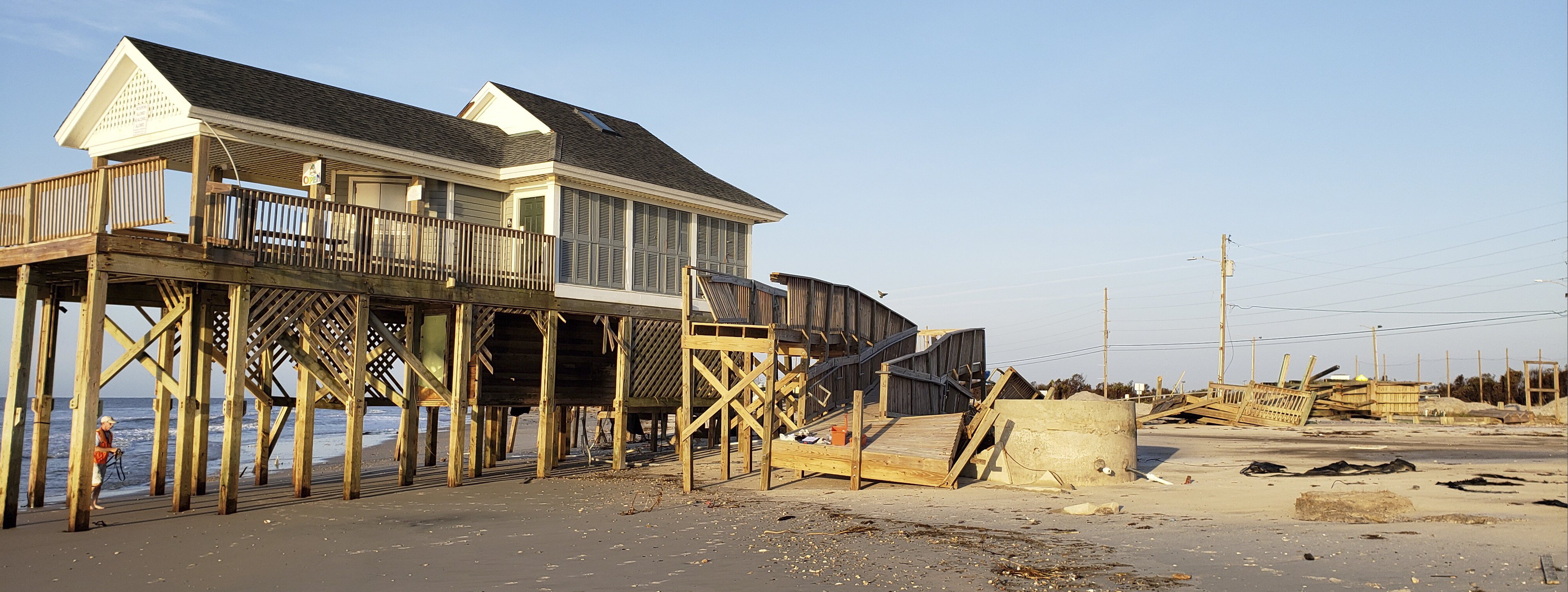NHERI CONVERGE Defines Perishable Data in Extreme Events Research
New paper in the journal Disasters provides guidance for interdisciplinary reconnaissance and research
Published on October 25, 2023

A StEER reconnaissance team collecting perishable data at North Topsail Beach, NC, after Hurricane Florence in 2019. StEER’s post-Florence effort also included UAV and door-to-door assessments. (Image: Tracy Kijewski-Correa)
Extreme events research (EER) is fundamental to understanding and mitigating damage caused by natural hazards such as earthquakes, hurricanes, and tsunamis. In the NHERI network, the University of Colorado-based CONVERGE facility oversees the EER ecosystem, a collection of eight NSF-funded extreme event teams.
CONVERGE PI Lori Peek compares EER researchers to detectives. “One of their main objectives is to obtain and analyze perishable data. After a major disaster, reconnaissance teams gather evidence left behind – quickly – before that data is washed or blown away, cleaned up, or otherwise forgotten,” she said.
When developing the CONVERGE Training Module on Collecting and Sharing Perishable Data, Rachel Adams, lead developer, and the team found that there was no standard definition for perishable data across disciplines. “We realized that we could significantly improve future extreme events research by defining the term and sharing that definition widely with the community,” Adams said.
The resulting paper, “Defining, Collecting, and Sharing Perishable Disaster Data” was recently published in the journal, Disasters.
“We present a comprehensive view of the topic,” said Candace Evans, who served as a co-developer of the module and paper co-author. “For example, we discuss ethical considerations in data collection efforts, such as protocols for collecting data when first responder efforts are still in effect. We also address issues like informed consent that are necessary if collecting information from affected people.”
Peek noted that their goals in writing the new paper and developing the interactive training were threefold. “We wanted to help researchers, funders, and communities,” she said. “Specifically, our intent was to support those who study disasters to ethically collect perishable data and those who fund this work to have a clear definition in the literature. Ultimately, though, we want to help ensure that the data that is collected is useful to the affected communities.”
The paper abstract and link are included below.
Adams, Rachel M., Candace M. Evans, and Lori Peek. 2023.
“Defining, Collecting, and Sharing Perishable Disaster Data.”
Disasters, https://doi.org/10.1111/disa.12592.
Researchers across disciplines have long sought to collect ‘perishable data’ in the context of disasters. Yet, this data type is neither consistently defined nor discussed in specific detail in the literature. To address this gap, this paper defines perishable data and provides guidance on ways to improve both how it is collected and shared. Here, perishable data is conceptualized as highly transient data that may degrade in quality, be irrevocably altered, or be permanently lost if not gathered soon after it is generated. Perishable data may include ephemeral information that must be collected to characterize pre-existing hazardous conditions, near-miss events, actual disasters, and longer-term recovery processes. This data may need to be gathered at multiple points in time across varying geographic scales to accurately characterize exposure, susceptibility to harm, or coping capacity. The paper considers ethical and logistical challenges and discusses opportunities to advance equitable perishable data collection and dissemination.





